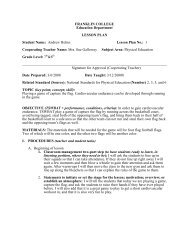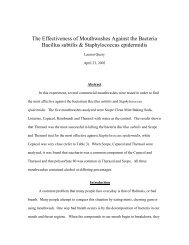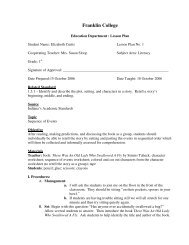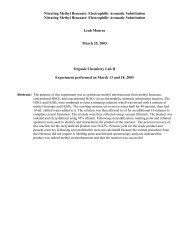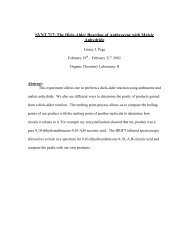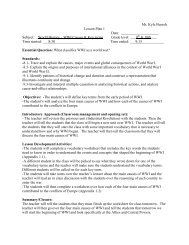Melissa Bockhold Heather Coddington - Franklin College
Melissa Bockhold Heather Coddington - Franklin College
Melissa Bockhold Heather Coddington - Franklin College
Create successful ePaper yourself
Turn your PDF publications into a flip-book with our unique Google optimized e-Paper software.
large amount of confidence in Seagate’s current management. Second, by having<br />
management invest alongside the private equity company, Silver Lake is ensuring an<br />
alignment between management and shareholder interests. Typically in situations such as<br />
this, the private equity firm will own between 70-90% of the common equity of the<br />
bought-out company (Note). Thus, Silver Lake’s 89% ownership of common equity is<br />
right on target.<br />
The senior debt will be financed by large financial institutions such as commercial<br />
banks. Debt provided from these institutions is typically comprised of two components:<br />
a revolving credit facility and term debt. Senior debt carries seniority or preference over<br />
the other types of debt used in a LBO. These lenders have the most senior claim against<br />
the cash flows and assets of a business, so principle and interest payments to this group<br />
take precedence over other types of debt (Note). In Seagate’s particular case, we feel that<br />
approximately 50% of the company’s new capital structure should be composed of senior<br />
debt.<br />
Subordinate debt, or junior debt as it is sometimes called, is the middle section of<br />
the capital structure, and it generally fills the gap between the senior debt and equity in a<br />
transaction. This type of debt “can take the form of notes from the private placement<br />
market or high-yield bonds from the public markets, depending on the size and<br />
attractiveness of the deal” (Note). Since this type of debt has claim on a company’s cash<br />
flows and assets only after the senior debt has been dealt with, junior lenders’ low<br />
priority and high risk is compensated with higher interest rates. In Seagate’s case, we<br />
feel that this type of debt should account for 5% of their total capital structure.<br />
24




